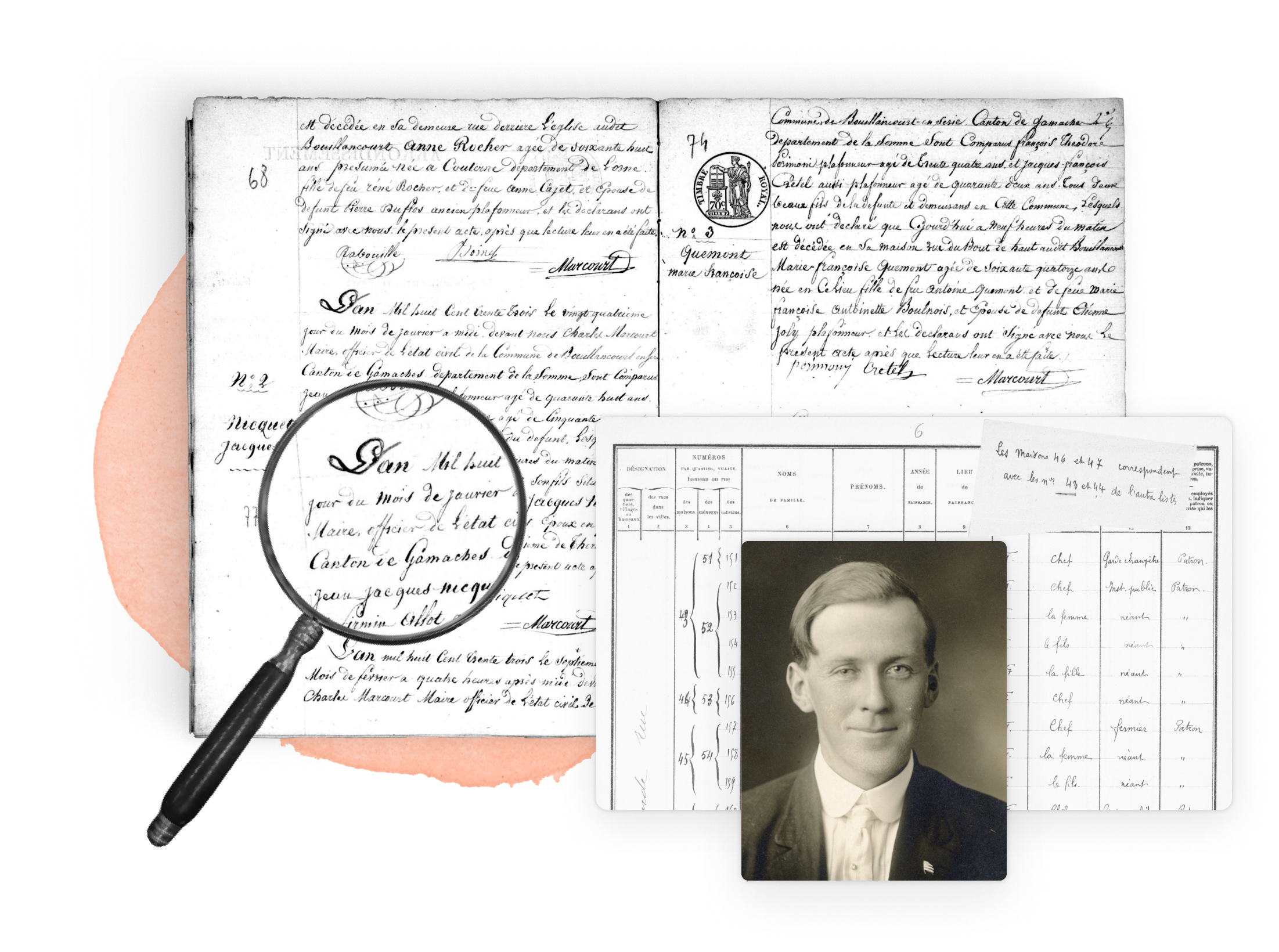The Public Land Survey System, also known as the Rectangular Survey System, is the United States government’s method for surveying land starting with the Land Ordinance of 1785. The systematic method of surveying was needed to help the cash-strapped new country distribute—and profit from—large swaths of land gained after war with Britain and ceded by states.
The previous survey system, metes and bounds, was based on fixed landmarks and boundaries with adjoining properties.[1]
Research your ancestors on MyHeritage
Why should genealogists know about the Public Land Survey System?
Land patents, which are records that document the sale of public lands to individuals or businesses, use Public Land Survey System terminology to describe the land being sold. Genealogists can use this terminology to learn the location of the land.
You can search land patents for nine states on MyHeritage. Surviving land patents also are searchable on the Bureau of Land Management General Land Office website.
Subsequent land sales were recorded in land and property records at local courthouses.
How the Public Land Survey System works

Under the Public Land Survey System, land was systematically surveyed into 6-square-mile townships and 1-square-mile sections as follows:
- A principal meridian (a north-south line) and baseline (east-west) were established.
- Additional east-west lines were established at 6-mile intervals from the baseline, to form numbered tiers.
- Additional north-south lines were established at 6-mile intervals from the principal meridian, to form numbered ranges.
- The resulting grid created townships measuring 6 square miles (9.656 km²) each.
- Townships were divided into 36 sections measuring 1 square mile each (2.59 km² or 640 acres).
- Sections could be subdivided into different-size lots for sale, such as:
- quarter sections (160 acres)
- half-quarter sections (80 acres)
- Quarter-quarter sections (40 acres)[3]
Township and section numbers

A numbering system describes the specific position of each townships and section:
- Township numbers: Townships were labeled by their position relative to the baseline and prime meridian. For example, township T2NR3E was located in the second tier north of the baseline and the third range east of the prime meridian.
- Section numbers: Sections were numbered starting with the northeast-most section in the township, assigned the number 1. Numbering proceeded west to the northwest-most section, assigned the number 6. The section below 6 was given the number 7, then numbering proceeded back east, with number 12 below number 1. Numbering proceeded west again, then down one row, then east, continuing with this pattern until the southeast-most section, assigned number 36.[3] The Land Ordinance of 1785 provided that one section in each township, usually Section 16, was set aside for public schools.[1]
Aliquot parts
Aliquot parts is a way to represent the exact subdivision of the piece of land. Each section was subdivided into halves and quarters. Halves of a section are represented as N, S, E, and W (such as "the north half of section 5"). Quarters of a section are represented as NW, SW, NE, and SE (such as "the northwest quarter of section 5").
For example, W1/2 SE1/4 is the southeast quarter of the west half of a section.[3]
States surveyed under the Public Land Survey System
The first area to be surveyed using the Public Land Survey System was in eastern Ohio. (Parts of Ohio had already been surveyed under the metes and bounds system.)
States with lands surveyed under the Public Land Survey System are:
Explore more about the Public Land Survey System
- Arkansas, State Land Registries records collection at MyHeritage
- Land Patents - Alabama records collection at MyHeritage
- Land Patents - Arkansas records collection at MyHeritage
- Land Patents - Florida records collection at MyHeritage
- Land Patents - Louisiana records collection at MyHeritage
- Land Patents - Minnesota records collection at MyHeritage
- Land Patents - Mississippi records collection at MyHeritage
- Land Patents - Ohio records collection at MyHeritage
- Land Patents - Wisconsin records collection at MyHeritage
References
- ↑ 1.0 1.1 Ed Redmond, “Surveying: The Art of Measuring Land, Part Two,” Library of Congress Blogs, 18 December 2019
- ↑ "Principal Meridians and Baselines," U.S. Department of the Interior, Bureau of Land Management. Public Domain image.
- ↑ 3.0 3.1 3.2 "Rectangular Survey System," US Department of the Interior, Bureau of Land Management, General Land Office
- ↑ "Public Land Survey System (PLSS)," U.S. Department of the Interior, U.S. Geological Survey. Public Domain image.
- ↑ "Frequently Asked Questions: Where Are the Public Land States?," US Department of the Interior, Bureau of Land Management, General Land Office


